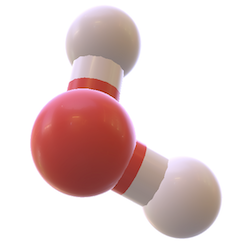Pathway: Sulfide oxidation to sulfate
Reactions in pathway: Sulfide oxidation to sulfate :
Sulfide oxidation to sulfate
While the human body is very economical with sulfur amino acids (SAA), superfluous SAA are degraded via cysteine to toxic hydrogen sulfide which must be dealt with. The pathway to oxidize this gas is localized to mitochondria and is highly conserved, pointing back to a time when life was immersed in sulfide-rich waters.
The pathway for sulfide oxidation consists of five reactions, one of which, the sulfur transfer from thiosulfate to glutathione, is still to be characterized fully. A mutation in one enzyme has been identified that is associated with ethylmalonyl encephalopathy and where tissue sulfide is elevated (Stipanuk & Ueki 2011).
The pathway for sulfide oxidation consists of five reactions, one of which, the sulfur transfer from thiosulfate to glutathione, is still to be characterized fully. A mutation in one enzyme has been identified that is associated with ethylmalonyl encephalopathy and where tissue sulfide is elevated (Stipanuk & Ueki 2011).
Cellular metabolism of amino acids and related molecules includes the pathways for the catabolism of amino acids, the biosynthesis of the nonessential amino acids (alanine, arginine, aspartate, asparagine, cysteine, glutamate, glutamine, glycine, proline, and serine) and selenocysteine, the synthesis of urea, and the metabolism of carnitine, creatine, choline, polyamides, melanin, and amine-derived hormones. The metabolism of amino acids provides a balanced supply of amino acids for protein synthesis. In the fasting state, the catabolism of amino acids derived from breakdown of skeletal muscle protein and other sources is coupled to the processes of gluconeogenesis and ketogenesis to meet the body’s energy needs in the absence of dietary energy sources. These metabolic processes also provide the nitrogen atoms for the biosynthesis of nucleotides and heme, annotated as separate metabolic processes (Felig 1975; Häussinger 1990; Owen et al. 1979).
Transport of these molecuels across lipid bilayer membranes is annotated separately as part of the module on "transmembrane transport of small molecules".
Metabolic processes in human cells generate energy through the oxidation of molecules consumed in the diet and mediate the synthesis of diverse essential molecules not taken in the diet as well as the inactivation and elimination of toxic ones generated endogenously or present in the extracellular environment. The processes of energy metabolism can be classified into two groups according to whether they involve carbohydrate-derived or lipid-derived molecules, and within each group it is useful to distinguish processes that mediate the breakdown and oxidation of these molecules to yield energy from ones that mediate their synthesis and storage as internal energy reserves. Synthetic reactions are conveniently grouped by the chemical nature of the end products, such as nucleotides, amino acids and related molecules, and porphyrins. Detoxification reactions (biological oxidations) are likewise conveniently classified by the chemical nature of the toxin.
At the same time, all of these processes are tightly integrated. Intermediates in reactions of energy generation are starting materials for biosyntheses of amino acids and other compounds, broad-specificity oxidoreductase enzymes can be involved in both detoxification reactions and biosyntheses, and hormone-mediated signaling processes function to coordinate the operation of energy-generating and energy-storing reactions and to couple these to other biosynthetic processes.
